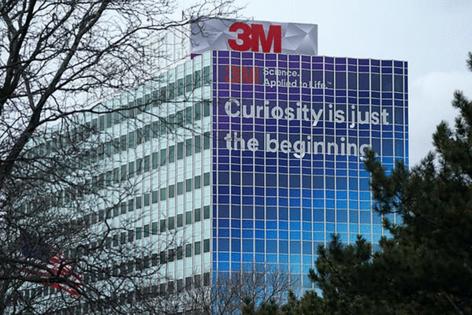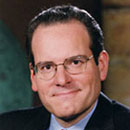3M's PFAS litigation far from over, billions more in settlements likely
Published in Business News
Thousands of Americans who blame 3M’s PFAS-laden firefighting foams for giving them cancer will present their claims to a jury for the first time this fall.
Unless they reach a settlement with the Maplewood-based company first.
“The worst-kept secret in this litigation right now is that these lawsuits are expected to settle soon,” attorney Ronald Miller, whose firm represents many plaintiffs, wrote in a blog he keeps to track the cases.
Settlement or not, 3M faces potentially billions of dollars in personal injury payouts and in dozens of other PFAS cases. Even after a blockbuster 2023 settlement of $12.5 billion after public systems found PFAS in their drinking water, the manufacturer might be only halfway through its “forever chemical” liabilities.
Analysts figure there’s $5 billion to $15 billion more in eventual legal payments for PFAS, a family of chemicals 3M pioneered that do not readily break down in the environment and have links to some cancers.
Those payouts will happen through the years if not decades. But the cash drain will undercut CEO Bill Brown’s priority to push out more new products and make 3M an innovation machine.
“Whenever anyone says, ‘None of this litigation will impact operating results,’ they’re correct. But it does impact cash flow, and that also means they have less capital to invest in new products and grow the business,” said RBC Capital Markets analyst Deane Dray. “As for the motivation to settle, I think that’s appropriate.”
3M profited greatly from PFAS in Scotchgard, firefighting foam and thousands of other components and products from the past 70 years. Now 3M is reckoning with what it first realized in the 1970s and ′80s: The chemicals accumulate in both the environment and human bodies, with certain versions posing potential health risks.
Since 3M agreed to an $850 million PFAS contamination settlement with Minnesota in 2018, tens of thousands of suits from governments and individuals have followed.
“We’re taking them piece by piece,” Brown said on a conference call last month.
The firefighting foam cases now number more than 12,000 and have affected firefighters and civilians alike. They combined into a multidistrict litigation proceeding in a South Carolina federal court, and the first “bellwether” trial begins Oct. 20. That should inform a broader settlement and will focus on one or more plaintiffs with kidney cancer.
The lead plaintiffs’ attorneys did not respond to requests for comment about settlement talks. 3M said in a statement the company “will continue to address PFAS litigation” by defending itself “in court or through negotiated resolutions, all as appropriate.”
Federal Judge Richard M. Gergel has assigned a mediator to settlement talks and urged a pretrial resolution.
“There are a lot of young lawyers out there who would love to try a PFAS case and will do it on a contingency fee basis,” he told attorneys last summer, according to court transcripts. “And the defendant is going to have to have really good defense lawyers all across America defending these cases. The cost of that is potentially breathtaking.”
In all his public statements since becoming 3M CEO in May 2024, Brown has not lingered long on litigation. When asked about the status of the PFAS lawsuits, he often points to securities filings, which contain dozens of pages on litigation progress.
The company’s most recent quarterly report references PFAS 299 times, including updates on the end of 3M’s PFAS manufacturing, on track for the end of the year.
“These are all settling legacy issues, and we’re going to deal with this as best as we can,” Brown said last month during a call with analysts. “It’s important for us to make sure that we maintain the cash flexibility to handle these issues as they come, yet still invest in the growth of the company.”
A Baptista Research report said 3M’s healthy balance sheet can manage PFAS expenses “without compromising its strategic growth priorities.”
UBS analyst Amit Mehrotra was less optimistic, telling Brown on a conference call last month: “I still feel there’s this overhang on the value of the company based on these pending liabilities.”
Unlike his predecessor, Brown has not made it a public priority to “reduce risk and uncertainty,” as former CEO Mike Roman would often say. Brown wants employees, stockholders and the public focused on 3M’s return to innovation and growth.
“It’s pretty easy to get caught up in the turnaround story,” Dray said. “We’re just concerned there’s still this black cloud of PFAS that is going to create headline risk.”
PFAS, commonly used in consumer products for waterproofing and stain resistance, has been in firefighting foam for decades to effectively smother fuel fires. Firefighters exposed to the foam say in court documents the materials caused their cancer, while residents near military bases that used the foams allege contaminated water triggered their illnesses.
If the first bellwether case starts as scheduled, it could be the first of many that test how juries respond to evidence of personal injury weighed against 3M’s defense. (3M is one of several companies named in the suits, including fellow PFAS manufacturers Chemours and DuPont.)
3M went through more than a dozen bellwether trials before reaching a $6 billion settlement with military service members and veterans over allegedly defective Combat Arms earplugs.
The company reached the massive water systems settlement just before the first bellwether case’s scheduled start in June 2023.
Miller, the attorney, thinks 3M “will follow the same pattern as the water contamination lawsuits they settled for billions of dollars” and settle this before the October trial begins.
Then there’s the matter of more than 30 state attorneys general suing 3M for PFAS contamination. 3M just settled with New Jersey for up to $450 million, but lawsuits are also pending in Canada, Belgium, the Netherlands and other countries. Plus there’s about 50 other cases from local governments, other companies and landowners, according to 3M’s quarterly filing.
“I think it will play out periodically,” Dray said, “over the next several years.”
©2025 The Minnesota Star Tribune. Visit at startribune.com. Distributed by Tribune Content Agency, LLC.












Comments